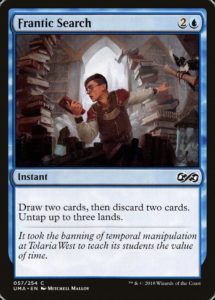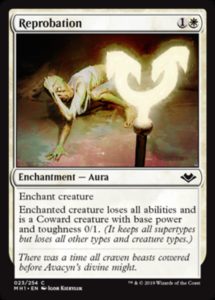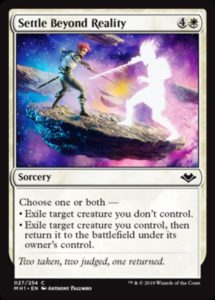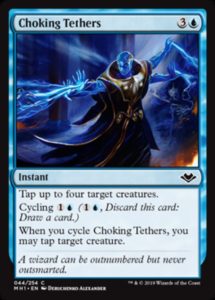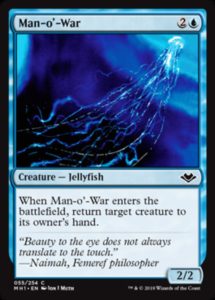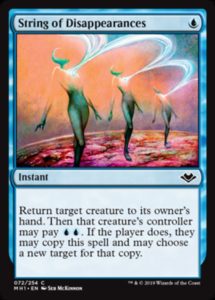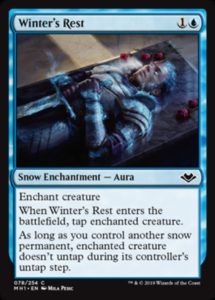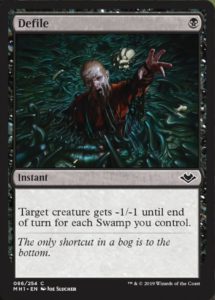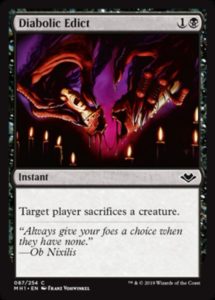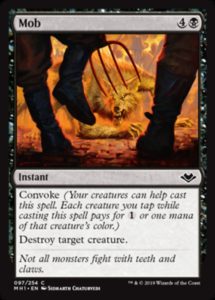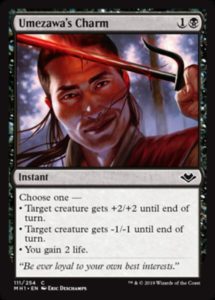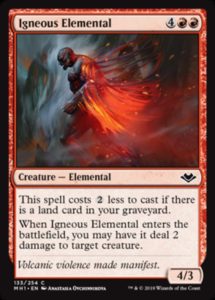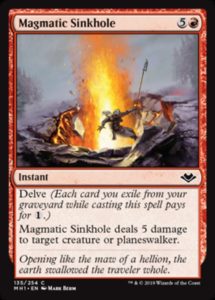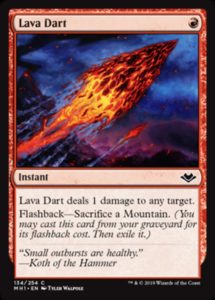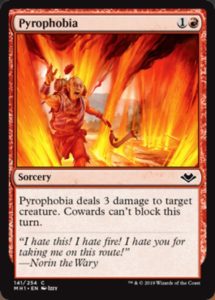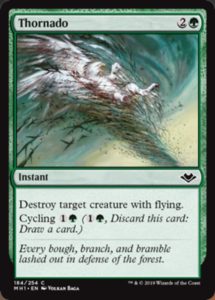Modern Horizons season has arrived! Prerelease weekend is in the rear view mirror, but coming up fast are MagicFests DC and Seattle, with the Mythic Championship and MagicFest Vegas following later this summer. Modern Horizons will see more high level play than any Masters set has seen, which warrants a deep look into this new, high-powered format.
The Format
Modern Horizons follows the trend of Ultimate Masters, Masters 25, and Iconic Masters in that it has loose archetypes with a ton of cross-synergies, rather than the more rigid archetypes of Modern Masters 2013 and 2015. Such complicated, nuanced, and powerful sets tends to reward drafters who prioritize three things:
- Drafting raw power
- Finding synergy between your powerful cards
- Drafting strong interaction
When archetypes are muddled, finding synergies becomes more difficult and less reliable. For example, let’s look at U/W blink. At common, we have Ephemerate and Settle Beyond Reality as straightforward ways to blink your creatures for value. Yes, there are also cards like String of Disappearances and Man-o’-War to bounce and recast your cards, but they’re less efficient on mana and often better to point at your opponent’s creatures.
We’ve got ways to blink things, but to determine how excited we are to blink things, we need to look at our commons. There are only five common creatures in white-blue with enters-the-battlefield effects: Irregular Cohort, Knight of Old Benalia, Faerie Seer, Man-o’-War, and Pondering Mage. Blinking a Pondering Mage is awesome, albeit a bit slow. None of the other cards necessarily provide you with a card’s worth of value, and both Knight of Old Benalia and Faerie Seer aren’t that impressive to blink (the Faerie is much better when you’re in UB Ninjas). While there are a couple ways to blink things and a couple payoffs, it’s not an all-in archetype that way that Affinity was in MMA2013 and 2015.
Yes, this is only one example of the ten archetypes, but hopefully this demonstrates that WU isn’t about getting all the ETB creatures and blinking them—it’s about playing good WU cards and getting occasional value with blink effects. Accordingly, the color pair (and to some extent, the format as a whole) is less about forcing rigid archetypes with strong synergies, meaning point (2) of our criteria is harder to achieve.
In formats with loose synergy, the ability to disrupt your opponent becomes crucial. If you can break up their disparate synergistic pieces, your opponents’ cards lose value. If removal is too expensive or awkward to accomplish that task, then the format rewards board presence or raw card advantage. As you may have surmised, we’ll now investigate all the common removal to see whether (1) drafting raw power can be counterbalanced by (3) drafting strong interaction.
White
Reprobation looks like it should be a good card. It’s a Pacifism that also shuts off all abilities (though it does let the creature block for a turn). That said, this is a format where white has access to blink, blue has access to bounce, and both black and red have access to sacrifice effects. There are so many ways to lose value with this card that I can’t recommend playing more than one.
Now this on the other hand, is a powerful spell. Exiling anything with additional upside is a powerful effect. The issues here are cost and speed. Five mana is a lot to ask for, and since white lacks good early interaction beyond board presence, you might have to use this kill a three- or four-drop. Unless you’re getting some value from the blink (which, as mentioned previously, isn’t guaranteed), chances are you might be overpaying for the effect. Moreover, this being an expensive sorcery means that you are at the whims of your opponents’ combat tricks and instant speed interaction. This is a potent spell, but it’s insufficient for white to effectively play a controlling or disrupting route.
With only two interactive spells, and both of them having issues, it looks like white may have to stay creature-focused and rely on other colors for potent disruption. That set of circumstances tend to make white one of the weaker colors.
Blue
Choking Tethers isn’t really a removal spell. Even so, it’s worth mentioning because of how tempo-focused blue’s interaction is (and how effectively it combines with Eyekite, blue’s likely best cheap evasive threat). This isn’t a very strong card on its own, but its flexibility and high ceiling for an aggressive or tempo deck make it a fine playable.
Once again, Man-o’-War is absolutely amazing. Much of the removal in Modern Horizons is slow or clunky, so having a cheap, disruptive threat that synergizes super well with ninjas and blink while being outstanding by itself makes it a top tier common. I wouldn’t be surprised if this is yet again one of the best commons in the set, just like it was in A25 and EMA.
String of Disappearances is a neat twist on Chain Lightning, hewing closer to its design than Chain of Vapor. That said, this is mostly Unsummon with downside. Yes, it’ll be sweet when you have UUU up to save one of your creatures from a removal spell and bounce one of theirs, but that corner case is likely going to happen less frequently than you needing to bounce something of theirs but them having UU up. I won’t pretend that cheap, instant-speed interaction isn’t good, but for spells like this to be good, you need ways to either recoup the card disadvantage (and have a lot of powerful spells) or to utilize the tempo advantage by attacking.
It’s Unquenchable Thirst, except backwards and it cares about Snow instead of Deserts. This has many of the same issues as does Reprobation, with the added cost of requiring some amount of snow cards to function; but if you jump through those hoops, it does eliminate a creature more effectively than Reprobation. This spell is easy to overvalue (because it looks like 1U: destroy target creature) and undervalue (because getting five snow permanents in your deck isn’t that difficult). Overall, it seems fine, but underwhelming.
We’re two colors in and the removal isn’t looking stellar. Blue is able to effectively play a tempo game but doesn’t necessarily have the threats to utilize the tempo advantage, while white’s quantity and quality of interaction are lower than normal.
Black
Defile is better than it looks, though it does look quite anemic. You don’t need to be an 11+ swamp deck to take advantage of this; as long as black is a primary color, this should almost always be Disfigure (a perfectly good card) that sometimes becomes an excellent removal spell. It’s also the first cheap instant speed kill spell we’ve seen, making it even better than it would normally be. I’m not in love with the card; but in the land of expensive and clunky removal spells, a Disfigure could be king.
Edict effects are more powerful in Constructed. In Limited, there are too many creatures—especially tokens, cheap creatures, and ETB creatures—for your edicts to hit something relevant most of the time. That said, even removing Faerie Seer (which trades down on mana and value) could be enough to disrupt an aggressive ninja start. I don’t value this effect highly, but it’s good for colors to both have top tier and low tier removal spells. This is definitely lower tier.
Spending five mana to kill anything isn’t as good as it used to be. This is a much weaker card than Murderous Cut, but it’s still one of the top tier removal spells in the format. It’s also one of the few instant-speed unconditional removal spells, which makes it even better than it would normally be. This is almost certainly the best kill spell we’ve seen thus far (except for the god-tier Man-o’-War).
I love the design of this card. It’s a delightful reference to the most powerful piece of equipment ever printed and its wielder. It looks strangely out of place, since both pumping and gaining life without conditions or other benefits basically never happens in black; but all of these effects are still in color pie. This is a bottom tier removal spell/combat trick, but it’s by no means unplayable.
Black is the first color we’ve looked at with a diverse suite of tools, making it a strong color for removal. Almost all of blue’s abundant disruption is tempo-based and white’s is weaker than normal, so it’s refreshing to see black on solid footing. If all three of the Esper colors didn’t have good removal, I’d start thinking that the format’s disruption is quite weak and both combat tricks and aggressive strategies are the way to do. I still think the removal is weaker than I’d expect from a Masters sets (and have thus far seen go-wide aggressive strategies be quite strong), but black has sufficient answers to stymie the faster and creature-centric decks.
Red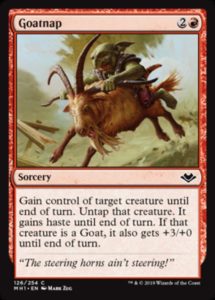
Goatnap isn’t a true removal spell, but this is another format with strong sacrifice outlets like Carrion Feeder. In the right deck, this will remove a blocker, add an attacker, and possibly even give +3/+0 and all your Sliver/Cat/Goblin bonuses, as well.
Igneous Elemental is difficult to evaluate. At six mana, this is a mediocre set of stats with a mediocre ETB effect. At four mana, however, this is a reasonable body with a powerful disruptive effect. I have yet to play with this card (and red is quite restricted in its ability to get lands into the graveyard); but I’ve been impressed by cards like Springbloom Druid, Winding Way, and Excavating Anurid‘s ability to bin lands. And that’s to say nothing about how good this is with Forgotten Cave, making it almost definitely the best of the cycling land cycle.
Cards like Igneous Elemental really excite me. They show extreme sensitivity to context: the challenge of binning a land, the question of whether Shock has enough relevant targets, understanding the window in which this is good. That makes proper evaluation a great puzzle, one which skilled players can use to subtly grind out extra advantage.
Magmatic Sinkhole is a pretty easy card to evaluate. Five damage is enough to kill almost anything, instant speed is important, and delve isn’t hard to enable (especially when you’ve got cards like Winding Way). This is a top tier removal spell and one I’m looking to splash in U/G Snow.
Lava Dart is a card that’s probably best when it’s shuttling back and forth between the sideboard and deck. Against Impostor of the Sixth Pride, Faerie Seer, and Treetop Ambusher, it’s a cheap removal spell that later on you can use to add one extra point of damage when it’s needed. Against other decks, there might be zero targets that die to a single point of damage. This is a low tier removal spell, but red is flush with options, so that’s solid design.
The flavor of Pyrophobia is outstanding, harkening back to both Norin the Wary and Boldwyr Intimidator (host to one of the best bits of game rules poetry in Magic). I understand that it’s a sorcery because Magmatic Sinkhole is an instant and “can’t block” makes way more sense on a sorcery, but that tweak makes for a surprisingly lackluster removal spell in a format that’s supposed to be high-powered. This is a solid spell and red decks will be happy to play several copies, but it would have been much stronger if it were a twist on Lightning Strike or even just a reprint of
Overall, red has fairly Standard removal in Modern Horizons. Yes, capital S Standard in that the power level of its removal seems pretty normal for an average Standard release. While black and blue enjoy a variety of powerful tools, red and white’s are rather ho-hum by comparison. [mtg_card]Prey Upon" data-card-name="Volcanic Hammer[Grmtg_card] (which isn’t Modern legal). Overall, red has fairly Standard removal in Modern Horizons. Yes, capital S Standard in that the power level of its removal seems pretty normal for an average Standard release. While black and blue enjoy a variety of powerful tools, red and white’s are rather ho-hum by comparison. [mtg_card]Prey Upon">Volcanic Hammer[Grmtg_card] (which isn’t Modern legal). Overall, red has fairly Standard removal in Modern Horizons. Yes, capital S Standard in that the power level of its removal seems pretty normal for an average Standard release. While black and blue enjoy a variety of powerful tools, red and white’s are rather ho-hum by comparison. [mtg_card]Prey UponGreen
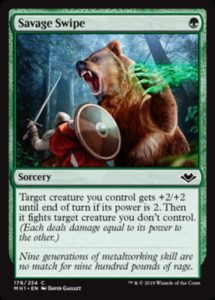
Green

Green

Thornado is one of the better Plummets simply because you can maindeck it without it ever being a dead card. That said, it’s also a bit easier to maindeck because the power level and average card quality in Modern Horizons seems fairly lower than in Masters sets—which makes sense, considering that the product doesn’t have Masters in its name and has drastically different booster and booster box makeup than a Masters set. Also, this isn’t a critique of the format—I like formats with lower power and there’s something fun about scraping together enough playables rather than having 10+ cuts every draft.
Green usually gets one fight removal spell and one Plummet effect. It’s batting above par simply because both are better than what green normally has access to, making green’s removal suite quite strong, particularly when you consider how poorly green’s removal options tend to line up against white and red’s.
And with that, you’ve got every common removal spell in Modern Horizons. White is surprisingly underpowered, red has options but many of them aren’t stellar, blue is tempo-focused but has a lot of options, black is in a great place, and green has access to (sometimes) a one mana Wild Instincts. Interaction is heavily sorcery speed and somewhat expensive, so combat tricks and cheap creatures are better than they might normally be, circumstances which favor aggressive decks like RW Slivers and WB Changelings. Hopefully this information is helpful to you in all your Modern Horizons endeavors. And, as always, thanks for reading.
—Zachary Barash is a New York City-based game designer and the commissioner of Team Draft League. He designs for Kingdom Death: Monster, has a Game Design MFA from the NYU Game Center, and does freelance game design. When the stars align, he streams Magic.
His favorite card of the month is Arcum’s Astrolabe. It’s a twist on Prophetic Prism, which is already his favorite card of all time. However, instead of being a simple, “now you have all the colors,” Acrum makes you work harder. If you can jump through the hoop of feeding it a single snow mana, it will not only filter your colors into any color of snow mana, it’ll also do so at a massive 50% discount.

